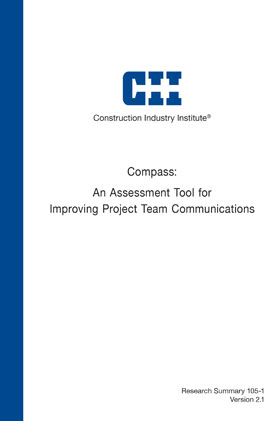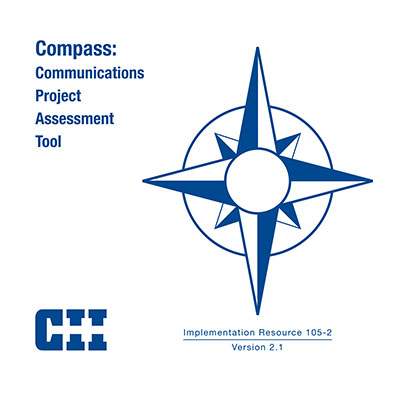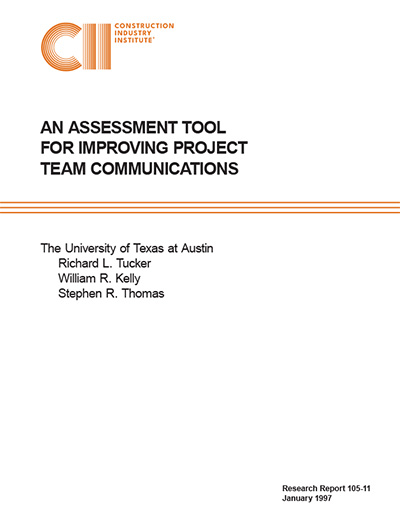
Compass: An Assessment Tool for Improving Project Team Communications, Version 2.1
Previous research has established that effective communications are essential to the successful completion of engineer-procure-construct (EPC) projects. However, this finding would be of little benefit without a reasonable means of measurement. In 1996, Research Team (RT) 105, Project Team Communications Research Team, investigated ways of measuring the effectiveness of project communications and, on the basis of its findings, developed Implementation Resource 105-2, Compass: Communications Project Assessment Tool. The tool was designed to enable project managers to assess project team communications during the execution phases of an EPC project. The tool targets three project groups: project management, engineering, and construction. This research summary describes the development and capabilities of this tool and introduces the newly developed second version.
As part of its charter to manage the CII Body of Knowledge, the CII Knowledge Management Committee (KMC) reviewed and updated the original RT105 publications in 2011. The KMC is now publishing this second version of the research summary, along with a revision of Implementation Resource 105-2 in the Microsoft Excel 2007 format. Version 2.0 of the Compass tool supports efficient data collection, analysis, and reporting of assessment results. The tool provides benchmarking results from 72 CII projects for comparison. It also permits more detailed analysis through the scoring of six critical categories of communication. These analyses help identify specific weaknesses in a project’s communications and can be used in the development of improvement strategies. Communication scores can also be charted over multiple assessment periods, enabling trend analysis.
The research team identified six categories of critical communications issues. They concluded that the communication survey questions logically fit within these categories: (RS105-1, p. 9)
- Accuracy – The accuracy of information received as indicated by the frequency of conflicting instructions, poor communication, and a lack of coordination
- Timeliness – The timeliness of information received, including design and schedule changes
- Completeness: The amount of relevant information received
- Understanding – An understanding of information expectations with supervisors and other groups
- Barriers – The presence of interpersonal, accessibility-related, logistical, or other types of barriers that interfere with communications with supervisors or other groups
- Procedures – The existence, use, and effectiveness of formally defined procedures outlining scope, methods, or other project concerns
The Compass tool contains surveys for project management, engineering, and construction. The tool consists of four main sections: (RS105-1, pp. 13-14)
- Introduction and User’s Guide
- Project Information and Response
- Communication Effectiveness Questions
- Reports Section
Project teams can realize significant benefits by using the Compass diagnostic tool. Most importantly, project communications effectiveness can now be both measured and monitored, and problem areas can be identified. This is the critical first step necessary in improving project team communications. (RS105-1, p. 17)



